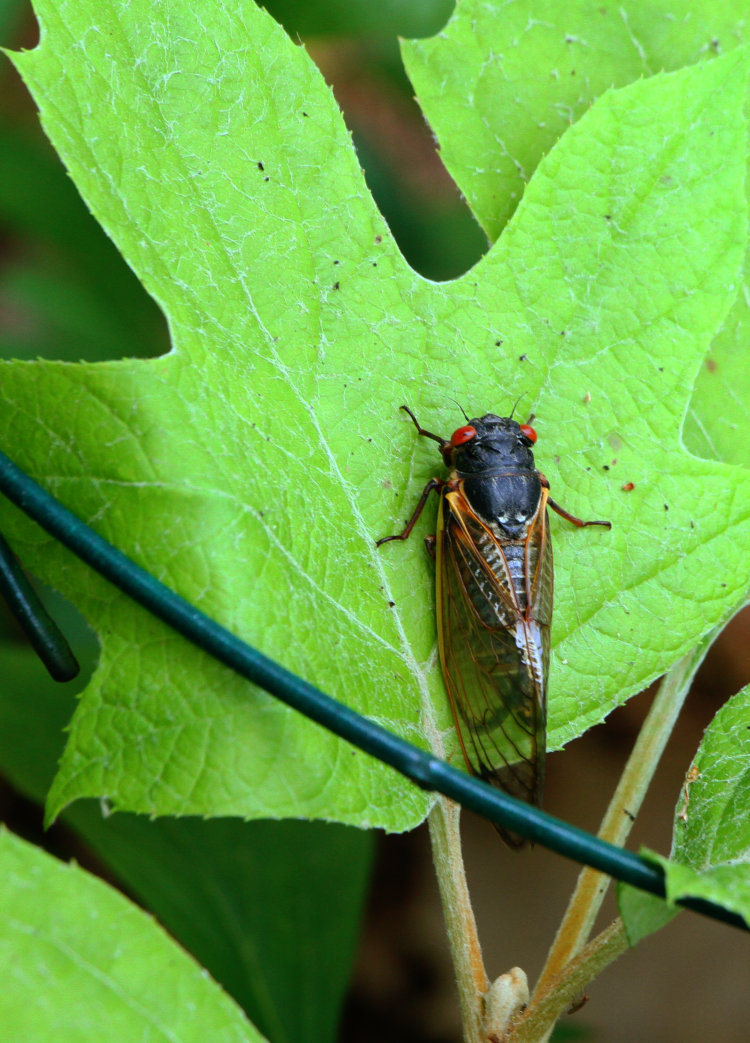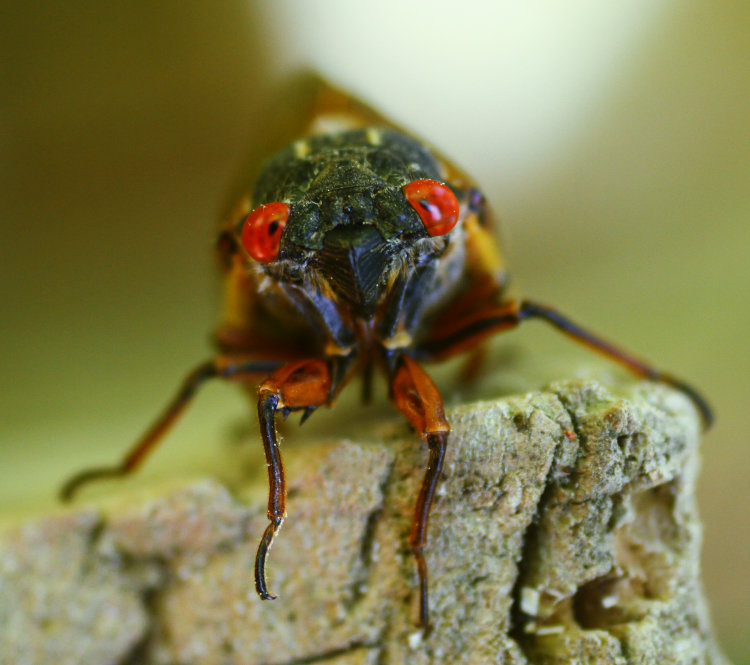There – now that I’ve mimicked damn near every news source out there, I can now say, don’t bother, and there will be no onslaught.
But, the emergence of the 13 year perdiodical cicadas has begun around here.

This is (most likely, anyway) one of the Brood XIX, 13-year cicada species, from the genus Magicicada, but right now I don’t think I can narrow the species down further than that – one of four, anyway.
Here’s the deal: There are annual cicadas, which is what most people see every summer, generally emerging in July and August, dark green with slightly paler eyes. They have a single-year lifecycle, hatching in late summer or early fall from eggs laid in crevices in tree bark, then making their way down to the base of the tree and underground, to remain there and feed on the sap from roots until emerging from the ground the next year in mid-summer, molting into a winged adult immediately after – those are those brown husks found on trunks and walls and such.
But there are also long-term periodical cicadas; same basic cycle, but the underground part lasts for years – in this case, thirteen. They emerge earlier – about this time, really – and have distinctly different coloration and body shapes. Because of this long cycle, they only appear every thirteen years, which helps them avoid over-competition with other species. This year, and the thing that the news has been harping on, there is another species of 17-year cicada (identified as Brood XIII,) also genus Magicicada, emerging at roughly the same time. However, there is likely only a very small portion of the country, like middle Illinois, where the two species will overlap, and the numbers seen there may be notably higher. But that’s not happening here.

Because they emerge much earlier than the decim, annual cicadas, they likely won’t even overlap in notable numbers with those, having either mated successfully or been eaten by the time the decims emerge, so even the songs aren’t likely to be heard in unison.
The Girlfriend spotted the first one, at top, late this morning, and then I started checking out the property and found five more, all clearly having emerged within the past twelve hours – many of them were in the immediate vicinity of their discarded exoskeletons, but all of them were dry and had fully extended wings, just warming up enough to get active. I will endeavor to try and find some either emerging from the ground, or getting ready to molt into adulthood – even though I’ve done that whole sequence before. But digging their way out would be cool to photograph. I’d have to be extremely lucky, but now’s the time to be watching for it.

Three were found clinging to just one of the rosemary plants, so I have a suggestion of where to look, anyway. And I’ve already seen them flying, appearing to be much slower and less agile than the decim cicadas, but with a distinctive rusty color-cast to the blur of their wings. They are also slightly shorter but notably narrower than the typical species, at least around here.
Maybe later on I can pin down a precise species, because I know you’re clamoring for it. For now, we’ll just see what I can find.




















































